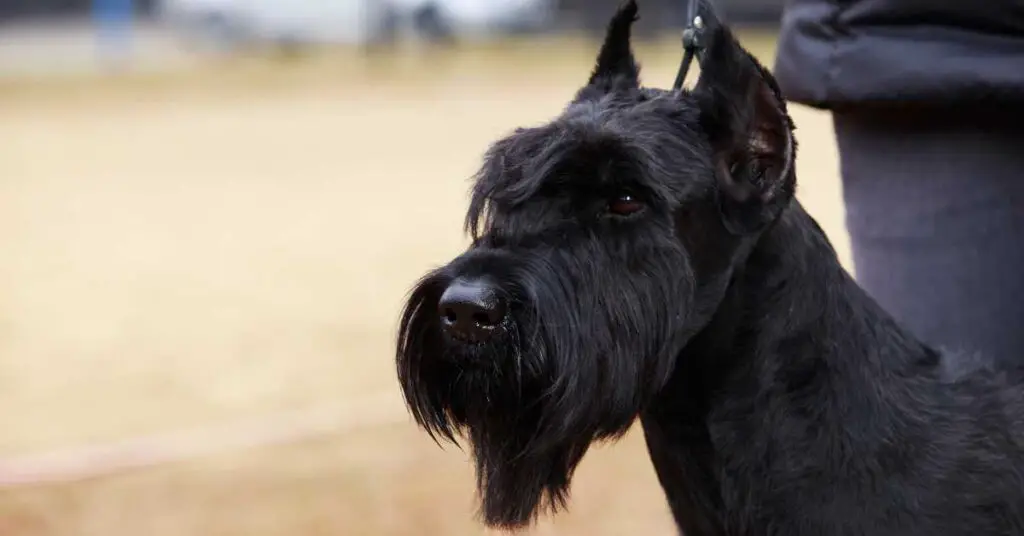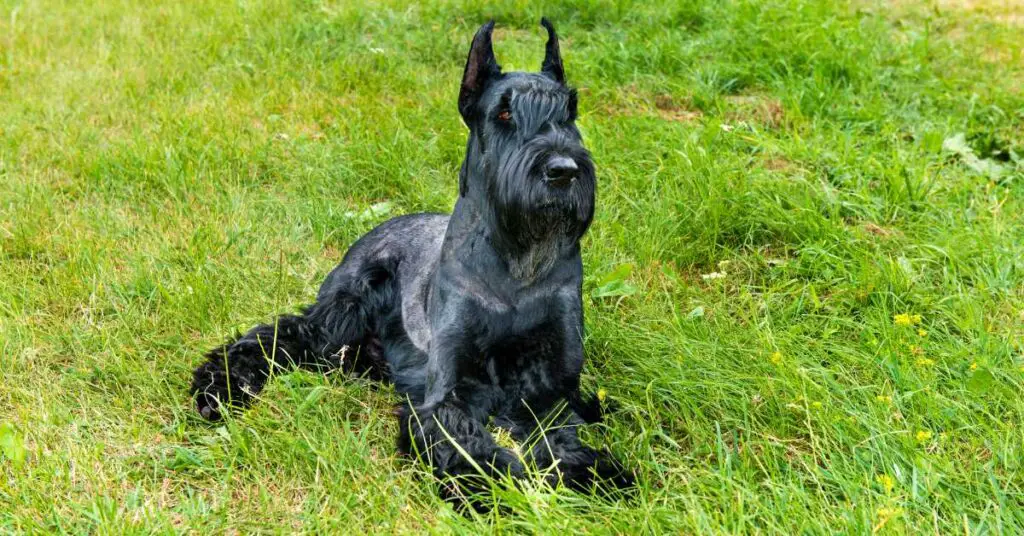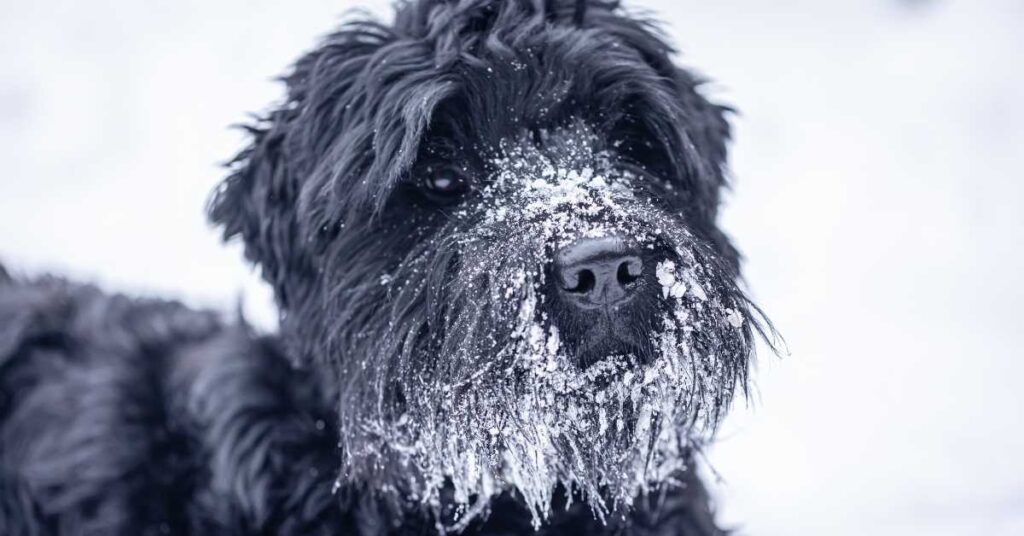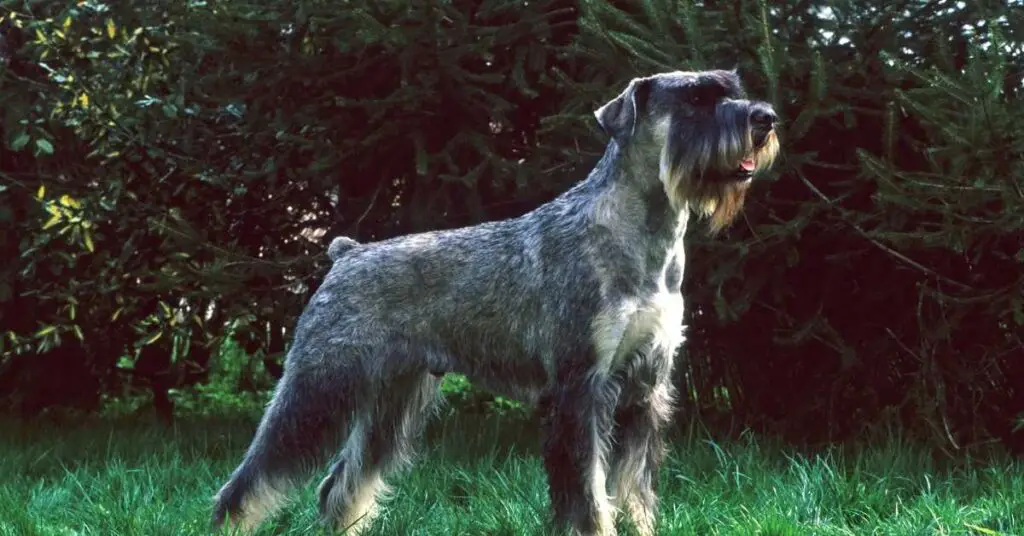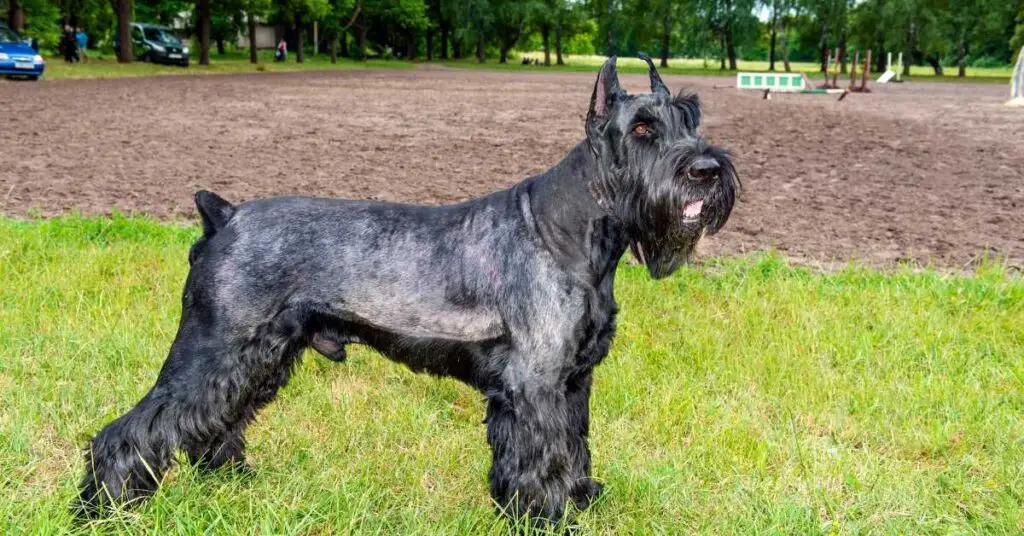Are you curious about the dissimilarity between a Giant Schnauzer and a Standard Schnauzer? Well, let’s dive in!
These two breeds may share a schnauzer heritage, but they have some notable distinctions. When it comes to physical size and appearance, the Giant Schnauzer lives up to its name, being larger and more robust than its standard counterpart.
But it’s not just about size; their temperament and personality traits also set them apart. Giants tend to be more protective and reserved, while Standards are known for their sociable and playful nature.
From exercise needs to grooming requirements, training abilities to health and lifespan, we’ll explore all the facets that make each Schnauzer unique.
So, come along and discover which Schnauzer breed would be the perfect fit for you!
Physical Size and Appearance
If you’re wondering about the physical size and appearance of the Giant Schnauzer and the Standard Schnauzer, one key difference lies in their stature. The Giant Schnauzer is larger and more robust, standing at 23.5 to 27.5 inches tall at the shoulder and weighing between 55 and 85 pounds. On the other hand, the Standard Schnauzer is slightly smaller, measuring 17.5 to 19.5 inches in height and weighing around 30 to 50 pounds.
Another noticeable distinction is their coat color variations. Giant Schnauzers come in solid black or salt and pepper, whereas Standard Schnauzers can also be seen in a solid black or pepper and salt coloration.
Additionally, it’s important to mention that tail docking practices differ between the two breeds. While it’s a common practice for Giant Schnauzers, it isn’t usually done for Standard Schnauzers.
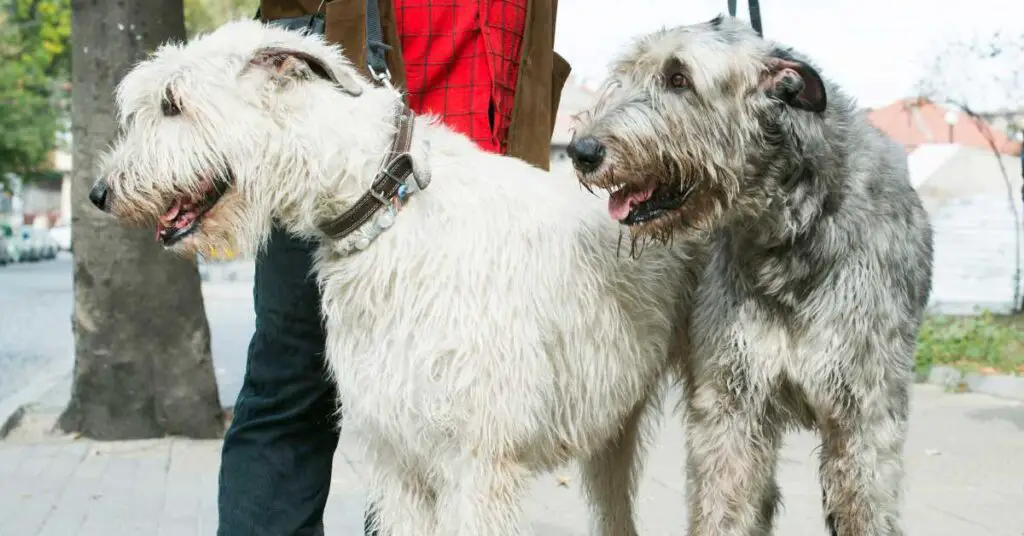
Temperament and Personality Traits
When considering the temperament and personality traits of a Giant Schnauzer and a Standard Schnauzer, it’s important to understand how they differ in their behavior and characteristics.
Here are some key points to help you understand their unique temperaments:
- Giant Schnauzers have a higher aggression level compared to Standard Schnauzers. They’re more protective and can be wary of strangers, making them excellent guard dogs.
- Standard Schnauzers, on the other hand, are known for being friendly and sociable. They’re generally more approachable and make great family pets.
- Both breeds require early socialization to ensure they grow up to be well-rounded dogs. This includes exposing them to different people, animals, and environments from an early age.
- Regular exercise and mental stimulation are crucial for both breeds to prevent boredom and destructive behavior.
Understanding these differences in temperament and personality traits will help you choose the right breed that aligns with your lifestyle and preferences. Remember, proper socialization and training play a significant role in shaping a dog’s behavior.
Exercise and Activity Needs
To meet their exercise and activity needs, both the Giant Schnauzer and the Standard Schnauzer require regular physical activity and mental stimulation. These breeds have high energy levels and thrive on being active. Daily exercise is essential to keep them mentally and physically fit.
Both breeds enjoy outdoor activities such as long walks, runs, and hikes. They also excel in various dog sports like agility and obedience training. However, it’s important to note that Giant Schnauzers may require more intense exercise compared to Standard Schnauzers due to their larger size and higher energy levels.
While outdoor exercise is beneficial, it’s equally important to engage them in indoor activities that challenge their minds, such as puzzle toys and interactive games. Providing a well-rounded exercise regime will ensure that both breeds remain happy, healthy, and content.
Grooming Requirements
To maintain their well-groomed appearance, both the Giant Schnauzer and the Standard Schnauzer require regular grooming. Here are some grooming techniques and shedding patterns to consider:
- Brushing: Both breeds have a dense, wiry coat that requires regular brushing to prevent matting and remove loose hair.
- Stripping: Stripping is a technique used to maintain the texture of the coat. It involves removing dead hair by hand or with a stripping knife.
- Trimming: Regular trimming is necessary to keep their facial hair neat and tidy, as well as to shape their overall appearance.
- Bathing: Bathing should be done as needed, using a dog-friendly shampoo to keep their coat clean and healthy.
In terms of shedding, both breeds are considered moderate shedders. Regular grooming helps to minimize shedding and keep their coat looking its best.
Training and Intelligence Levels
To effectively train your Giant Schnauzer or Standard Schnauzer, start by understanding their intelligence levels and the best methods to harness their potential. Both breeds are highly intelligent and trainable, but they may have different learning styles.
Obedience training techniques that focus on positive reinforcement and consistency work well for both breeds. These techniques include rewarding good behavior with treats or praise and using clear commands.
Mental stimulation activities are also crucial to keep these intelligent dogs engaged and prevent boredom. Puzzle toys, interactive games, and agility training are great ways to challenge their minds and keep them mentally stimulated.
Remember to always be patient and consistent in your training approach, as both Giant Schnauzers and Standard Schnauzers thrive in a structured and loving environment.
Health and Lifespan
The health and lifespan of both the Giant Schnauzer and the Standard Schnauzer can be influenced by various factors. When considering these factors, it’s important to note that both breeds share some common health issues.
Here are some key points to consider:
- Average Lifespan: Both the Giant Schnauzer and the Standard Schnauzer have a relatively long lifespan compared to other breeds. On average, they can live between 12 to 15 years.
- Common Health Issues: Both breeds are prone to certain health conditions, including hip dysplasia, eye problems such as cataracts and progressive retinal atrophy, and certain types of cancer. Regular check-ups, proper nutrition, and exercise can help mitigate these issues.
- Exercise: Both breeds require regular exercise to maintain their physical and mental well-being. Providing them with daily walks, playtime, and mental stimulation is essential for their overall health.
- Regular Veterinary Care: Regular visits to the veterinarian are crucial for both breeds to monitor their health, receive necessary vaccinations, and address any potential health concerns.
Living Arrangements and Space Requirements
When considering the living arrangements and space requirements for your Giant Schnauzer or Standard Schnauzer, it’s important to take into account their size, energy levels, and exercise needs.
Both breeds are highly energetic and require regular exercise to stay happy and healthy. They thrive in environments where they’ve the space to move around freely and burn off their excess energy.
While both can adapt to living in apartments, they do better in houses with access to a yard where they can run and play. However, if you live in an apartment, you can still provide them with the exercise they need by taking them for regular walks and providing mental stimulation through interactive toys and games.
Ultimately, the suitability of indoor vs. outdoor living and apartment vs. house will depend on your Schnauzer’s individual needs and your ability to meet them.
Compatibility With Children and Other Pets
If you have children or other pets, you’ll want to know how compatible Giant Schnauzers and Standard Schnauzers are with them. Here’s what you need to know:
- Compatibility with Children: Both Giant Schnauzers and Standard Schnauzers are known to be good with children. They’re patient, protective, and playful, making them great companions for kids of all ages.
- Compatibility with Other Pets: Both breeds can get along well with other pets, including cats and smaller dogs. Proper socialization from an early age is key to ensure a harmonious relationship.
- Compatibility with Small Apartments: While both breeds are energetic, they can adapt well to living in small apartments as long as they receive enough exercise and mental stimulation. Regular walks, playtime, and puzzle toys can help keep them happy and content in a smaller space.
- Adaptability to Different Climates: Both Giant Schnauzers and Standard Schnauzers have a thick, wiry double coat that provides protection from various weather conditions. They can adapt well to different climates, but extra care should be taken in extreme heat or cold.
Frequently Asked Questions
Are Giant Schnauzers and Standard Schnauzers Prone to Any Specific Health Issues?
Giant and Standard Schnauzers have specific genetic predispositions that can lead to common health problems. Ensuring regular check-ups and a healthy lifestyle can help prevent these issues and keep your Schnauzer happy and thriving.
How Often Should I Groom a Giant Schnauzer or a Standard Schnauzer?
To keep your Giant Schnauzer or Standard Schnauzer looking their best, make sure to groom them regularly. Brush their coat at least once a week and consider professional grooming every 4-6 weeks for a neat and tidy appearance.
Do Giant Schnauzers and Standard Schnauzers Have Any Specific Dietary Requirements?
Giant Schnauzers and Standard Schnauzers have specific dietary requirements to meet their nutritional needs. It’s important to provide a balanced diet that includes high-quality protein, healthy fats, and essential vitamins and minerals for their overall health and well-being.
Are There Any Notable Differences in the Life Expectancy of Giant Schnauzers and Standard Schnauzers?
The life expectancy differences between a Giant Schnauzer and a Standard Schnauzer can vary. It’s important to note that while both breeds are generally healthy, certain health issues may be more common in one breed compared to the other.
Can Giant Schnauzers and Standard Schnauzers Be Left Alone for Extended Periods of Time?
Giant Schnauzers and Standard Schnauzers can be left alone for extended periods of time, but it is not recommended. They require daily exercise and mental stimulation, and may develop behavioral issues if left alone for too long. Training methods can help with separation anxiety.
Conclusion
In conclusion, while both the giant schnauzer and standard schnauzer share similarities in their appearance and temperament, there are significant differences between the two breeds.
The giant schnauzer is larger in size and requires more exercise and grooming compared to the standard schnauzer.
Additionally, their trainability and intelligence levels may vary.
It’s important to consider these factors when choosing between the two breeds to ensure a compatible fit for your lifestyle and living arrangements.

